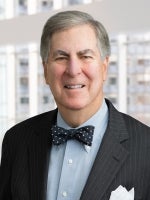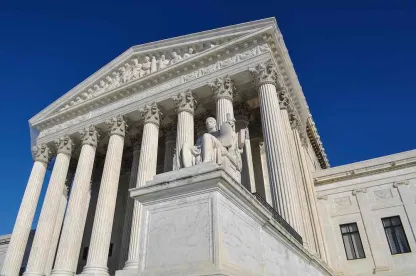Coming off the decisions in the landmark Dobbs and Bruen cases, the rest of the term might seem anticlimactic. Nevertheless, as the shelf is being cleared of the remaining cases, there are still rulings of significance to come. As the week opened, one of them—a religious freedom case—likely didn’t surprise anyone who listened to the oral argument or, indeed, who has been paying attention to the conservative Justices having changed the valences in religious liberty cases. The other two cases decided on the opening day of the week were both criminal cases of limited interest, but important nevertheless.
Continuing a sequence of cases that elevated the Free Exercise Clause of the First Amendment while limiting its Establishment Clause, the Court decided the case of Kennedy v. Bremerton School District. Joseph Kennedy was terminated from his job as a high school football coach in the Bremerton School District after he knelt at midfield after games to offer what the Court’s majority described as a quiet and brief personal prayer. The school district essentially conceded the point that, as the District Court found, the “sole reason” for the school district’s action was its perceived “risk of constitutional liability” under the Establishment Clause occasioned by Kennedy’s “religious conduct.” In upholding the school district’s action, the Ninth Circuit essentially applied what one might have thought was the abandoned Establishment Clause modality of Lemon v. Kurtzman, 403 U. S. 602 (1971). In determining that Kennedy had carried his burden in demonstrating infringement of his rights under both the First Amendment’s Free Exercise and Free Speech Clauses, a 6-3 conservative majority, in an opinion written by Justice Gorsuch, held that the Free Exercise and Free Speech Clauses protect an individual engaging in a personal religious observance from government reprisal and that the Constitution neither mandates nor permits the government to suppress such religious expression.
Describing the procedure that must be followed in a case such as this, the Court stated that once a plaintiff is able to demonstrate an infringement of his or her rights under the Free Exercise and Free Speech Clauses, the defendant must show that its actions were nonetheless justified and appropriately tailored. With it being clear that the sole reason for the school district’s action was its fear that any authorized prayer would result in an Establishment Clause violation, and it also being clear that the school district allowed what the Court took to be analogous faculty speech on public issues, the school district could not carry its burden. Thus, Kennedy was held to have shown that a government entity had burdened his sincere religious practice pursuant to a policy that is not “neutral” or “generally applicable.”
The Court’s majority utterly rejected the school district’s and Ninth Circuit’s belief that an individual’s rights to religious exercise and free speech must yield to an interest in avoiding an Establishment Clause violation under Lemon and its progeny, which had devolved into a view that the measuring stick for an Establishment Clause violation was whether a “reasonable observer” would consider the government’s challenged action an “endorsement” of religion. As it has in a number of recent cases, such as Dobbs and Bruen, the conservative majority returned to requiring interpretation based upon historical practices and original meaning. Thus, Justice Gorsuch opines that a natural reading of the First Amendment suggests that the two religion clauses have “complementary” purposes, not warring ones where one clause is always sure to prevail over the other.
The school district also argued before the Court that the coach’s praying had a coercive effect on the players. However, this theory was not ruled on below, and the Court found no evidence to support the claim in any event. Nevertheless, Justice Sotomayor, and Justices Breyer and Kagan, who joined her dissenting opinion, would have held just that.
Including in her opinion a photograph of a team prayer huddle, Justice Sotomayor characterized Coach Kennedy’s conduct completely differently from the way that Justice Gorsuch described it. Where claiming that Kennedy’s previous activities, which included both group team prayer and even an invitation for the opposing team and coach to join in, had been abandoned, Justice Gorsuch stated that the issue before the Court concerned short, private, and personal prayers, uttered silently by the coach alone. Justice Sotomayor, on the other hand, placed the solo prayer within a long-standing continuum of religious activity by Coach Kennedy, which she found coercive and otherwise violative of the Establishment Clause. Would she have ruled differently if she believed that the Court was, in fact, dealing only with short, private prayers? Would Justice Gorsuch have ruled differently if he believed that Kennedy was actively proselytizing? That might be determined in future cases. For now, we have a conservative majority that ruled last week that the state of Maine would not violate the Establishment Clause if it provided school tuition assistance to religious private schools in the same manner that it provided such assistance to secular institutions and now has driven a stake through whatever remnant there was of Lemon’s analytical methods.
One might ask why so many health care-related cases have interested the Court. The answer likely relates to the fact that, in our aging society, health care is both the largest component of the nation’s economy and national budget and its fastest growing. Thus, the Court has been presented with a disproportionate number of cases ranging from interpretations of the False Claims Act to resolution of extremely complex reimbursement formulae, as was the case in last week’s Becerra case.
On the health care criminal law front, a less disagreeable Court decided Ruan v. United States. With an opinion authored by outgoing Justice Breyer, and joined in greater or lesser degree by all of the Justices, the Court held that, to prove that under the Controlled Substances Act, 21 U. S. C. §841, a “knowingly or intentionally” mens rea applies to the statute’s “except as authorized” clause. Once a defendant meets the burden of producing evidence that his or her conduct was “authorized,” the government must prove beyond a reasonable doubt that the defendant knowingly or intentionally acted in an unauthorized manner. Here, two doctors licensed to prescribe controlled substances were convicted of violating §841, which makes it a federal crime, “[e]xcept as authorized[,] . . . for any person knowingly or intentionally . . . to manufacture, distribute, or dispense . . . a controlled substance.” A concomitant federal regulation authorizes registered doctors to prescribe controlled substances, but only if the prescription is “issued for a legitimate medical purpose by an individual practitioner acting in the usual course of his professional practice.” 21 CFR §1306.04(a). The doctors contested the trial court’s general instruction concerning intent that the government argued required no more than a showing of an “objectively reasonable good-faith effort” or “objective honest-effort.” That is not what the statute describes, nor is this the kind of minor offense that allows for an amorphous general intent.
Concepcion v. United States derives from Congress having passed the Fair Sentencing Act of 2010 to correct the wide, and widely criticized, sentencing disparity between offenses involving crack and powder cocaine. The Fair Sentencing Act did not apply retroactively, but the year after its passage, the Federal Sentencing Commission amended the Sentencing Guidelines to lower the range for crack-cocaine offenses, and made that reduction retroactive for some defendants. Then, in 2018, Congress enacted the First Step Act, authorizing district courts to “impose a reduced sentence” on defendants serving sentences for certain crack-cocaine offenses “as if [relevant sections] of the Fair Sentencing Act . . . were in effect at the time the covered offense was committed.” [Full disclosure: This author was among the conservative former government officials who provided support for the First Step Act before congressional committees.] In 2007, Carlos Concepcion pleaded guilty to one count of distributing five or more grams of crack cocaine in violation of the aforementioned 21 U. S. C. §841, and he was sentenced as a “career offender” in 2009 to 19 years in prison. Because Concepcion was sentenced as a career offender, he was not eligible for relief under the Sentencing Commission’s 2011 amendment. What got him to the Supreme Court was his pro se motion for a sentence reduction under the First Step Act, which he claimed modified the penalties for his convictions of a “covered offense” and applied to him retroactively.
Holding in favor of Mr. Concepcion, a 5-4 majority of the Court held that the First Step Act allows district courts to consider intervening changes of law or fact in exercising their discretion to reduce a sentence. The majority claims that federal courts historically have exercised broad discretion to consider all relevant information and that discretion also carries forward to later proceedings that might modify an original sentence. One might disagree with that lenient characterization, given the way that the Sentencing Guidelines were initially applied until the Court described their ultimately discretionary nature. Defendants like Concepcion and their counsel will take heart from the Court’s ruling that a district court’s discretion is bounded only when Congress or the Constitution expressly limits the type of information it may consider in modifying a sentence. The Court’s majority composition is interesting, with the Chief Justice and Justice Gorsuch (again displaying his libertarian tendencies) joining Justice Sotomayor’s opinion along with Justices Breyer and Kagan. The three dissenters, led by Justice Kavanaugh, objected to reliance upon certain unrelated legal or factual changes that occurred since the original sentencing. The majority’s license to the district courts is much broader.
More opinions are expected this week, so continue to watch this space.




 />i
/>i

